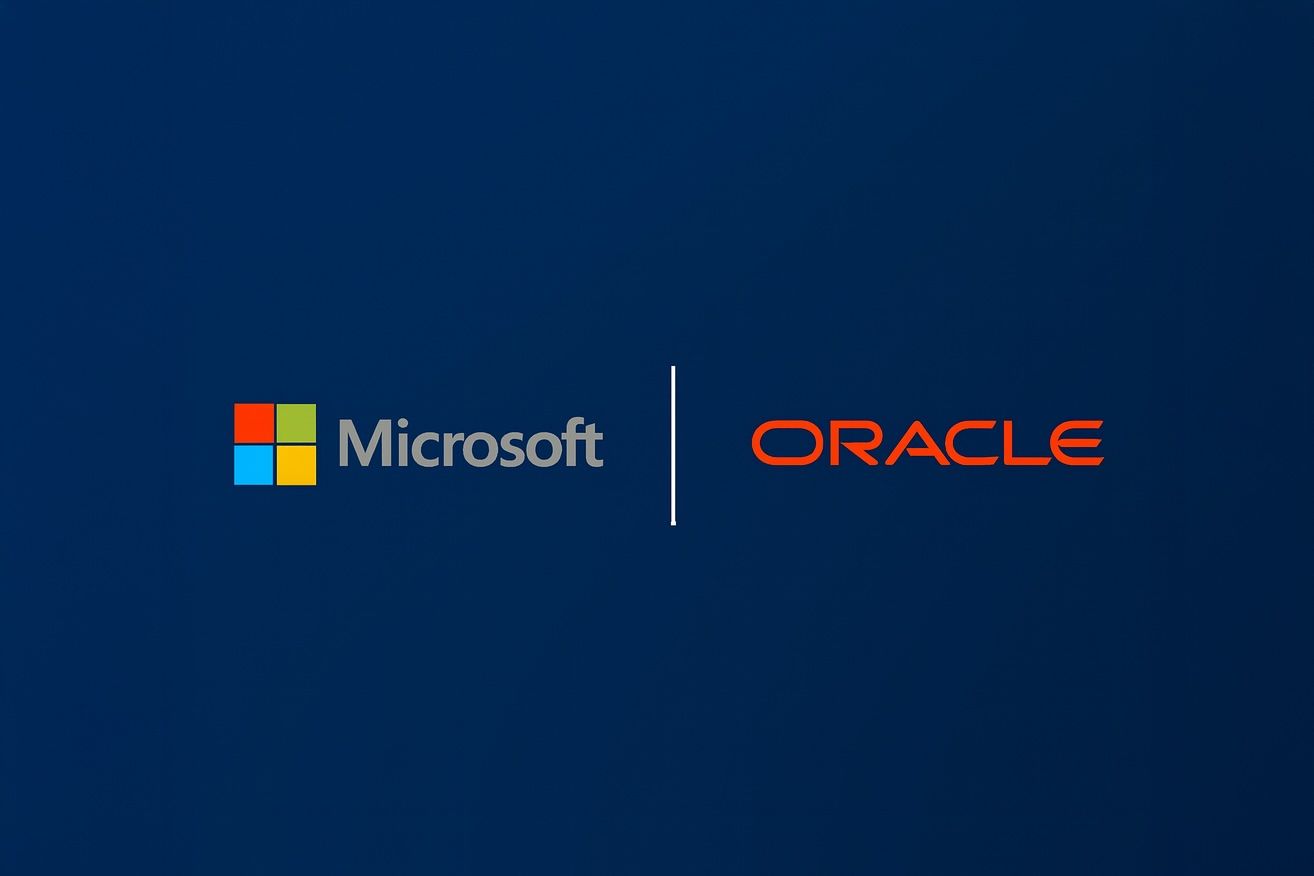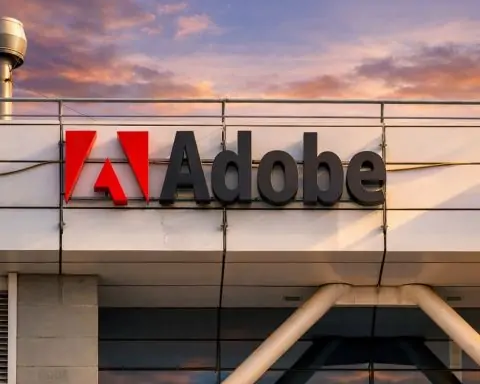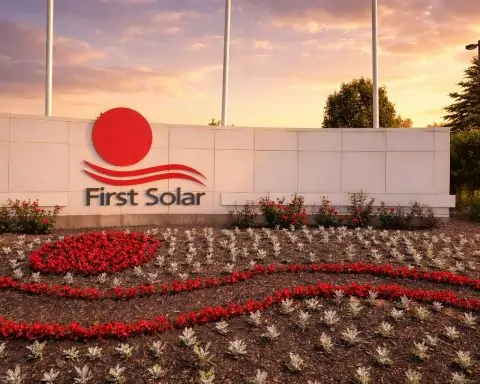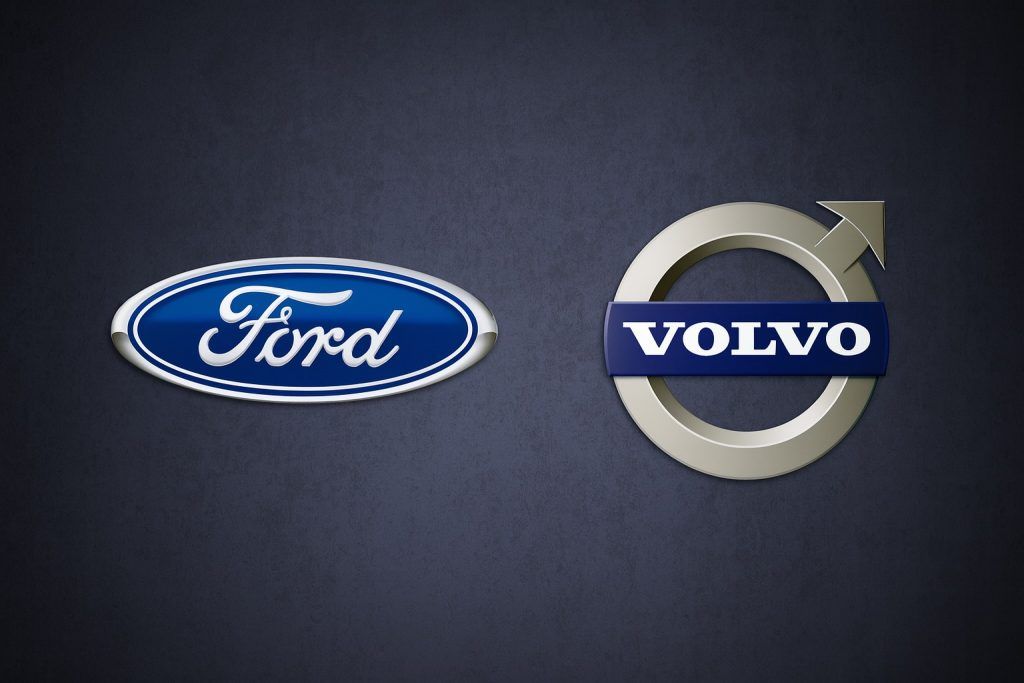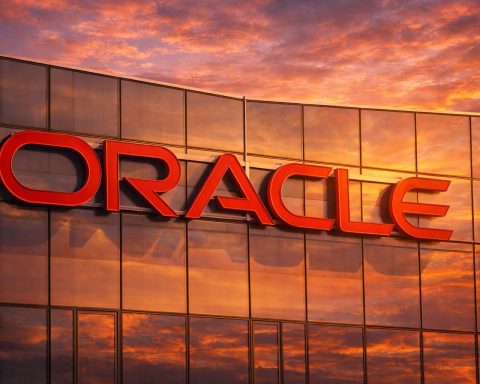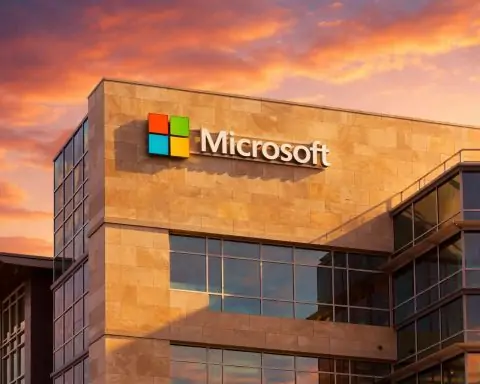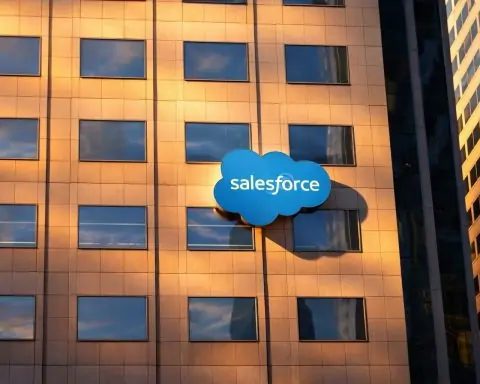- Stock Prices (Oct 23, 2025): Microsoft (NASDAQ: MSFT) is trading around $520–522 [1] [2] – essentially flat on the day – and up roughly 20–25% year-to-date [3]. Oracle (NYSE: ORCL) is near $280 [4], down modestly on Oct. 23 after mid-month profit-taking. ORCL has surged about 70% in 2025 [5] (peaking near $345 in early September) before sliding from those highs [6].
- Recent News: Microsoft is riding an AI/cloud wave – it just unveiled AI-enabled Surface “Copilot+” PCs and 5G laptops at GITEX (Dubai) and expanded AI partnerships (e.g. linking its Copilot AI with London Stock Exchange data) [7] [8]. Oracle has stolen headlines with blockbuster AI cloud deals: its Q1 FY2026 (ended Aug. 31) results showed $14.93B revenue (+12% YoY) [9], and reports surfaced of a rumored $300 billion OpenAI hosting pact [10] [11]. At its Oct. 15–16 Oracle AI World event, Oracle raised its 2030 revenue goal to $166B [12] and launched new AI software (like an AI Agent Marketplace) [13]. The companies even teamed up – Oracle announced an integration blueprint with Microsoft to link Azure’s IoT/AI services into Oracle’s cloud supply-chain software [14].
- Analyst Outlook: Wall Street remains largely bullish on both stocks. Most analysts rate Microsoft a Buy, citing its fast-growing Azure cloud (up 39% recently) [15] and double-digit earnings growth. Consensus 12-month targets for MSFT are in the $620–650 range [16] [17]. Oracle’s ratings are mixed: Jefferies lauds its “historic” AI quarter and targets ORCL at $360 [18], and UBS/Bank of America have set ~$360–370 targets [19], while the average 12-month target is around $300–320 (implying ~15% upside) [20]. However, some warn ORCL is richly valued (~40–50× forward EPS) and caution that not all promised AI revenue may materialize [21] [22].
- Financial Highlights: Microsoft dwarfs Oracle in scale but both show strong growth. In FY2025 (year ended June 30, 2025), Microsoft earned $281.7 billion revenue (+15% YoY) and ~$128.5B operating income [23]. Oracle’s full FY2025 revenue was $57.4B [24] (up 8%), with GAAP operating income $17.7B [25]. Microsoft’s cloud (Azure + SaaS) now exceeds $75B (up 34% YoY) [26], versus Oracle’s cloud (SaaS+IaaS) up ~28% in the latest quarter [27]. R&D spending highlights the gap: Microsoft spent about $32.5B on R&D in FY2025 [28] (up 10%), roughly three times Oracle’s $9.9B (FY2025) [29].
- Market Sentiment: Investor sentiment is upbeat. MSFT’s valuation (forward P/E ~28× [30]) is high but generally seen as justified by growth. 32 of 34 analysts call MSFT a Buy [31]. Oracle’s stock chart shows clear levels: traders note support around the high-$270s and resistance near $300 [32]. Bloomberg-equivalent “bullish” indicators (like options implied price) suggest ORCL could revisit its high-$300s by year-end [33] if the AI boom holds. Overall, mood is optimistic but cautious: ORCL’s wide target range ($175–$400) [34] reflects both belief in its AI potential and concern over its steep growth assumptions.
Stock Prices and Recent Performance
As of Oct. 23, 2025, Microsoft closed around $520.59 (prior close) [35], essentially unchanged for the day. The stock has steadily climbed this month (briefly touching ~$524 on Oct. 22 [36]) and is now up about 25% since Jan. 1 [37] [38]. In contrast, Oracle pulled back recently: it closed about $280.07 on Oct. 23 (after-hours) [39] [40]. Oracle rocketed to all-time highs above $345 in early September on AI cloud deal news [41] [42], but profit-taking drove sharp drops in mid-October. For example, ORCL fell ~7% on Oct. 17 and ~5% on Oct. 20 [43]. Even so, Oracle’s stock remains ~70% above its Jan. 2025 price [44] [45], far outpacing Microsoft’s year-to-date gain.
Recent Developments: Earnings, AI, and Leadership Moves
Microsoft: The latest earnings and product news have been positive. Microsoft’s Q4 FY2025 (ended June) saw revenue of $76.4B (+18% YoY) and net income $27.2B (+24%) [46]; the company pointed out that Azure revenue surpassed $75B (up 34%) [47]. In mid-October, at Dubai’s GITEX tech expo, Microsoft unveiled new Surface Copilot+ AI PCs and its first 5G Surface Laptop, aimed at bringing on-device AI capabilities to businesses [48]. Around the same time, Microsoft announced in-country hosting for Microsoft 365 Copilot in the UAE [49] and forged high-profile partnerships – for instance, it will link its Copilot AI assistant to the London Stock Exchange’s vast financial data [50]. On the corporate side, Microsoft restructured its leadership in late Sept. 2025: longtime sales chief Judson Althoff was promoted to head all commercial business, freeing CEO Satya Nadella to focus on large-scale AI infrastructure and innovation [51]. Regulatory news has been mixed: the EU accepted Microsoft’s plan to unbundle Teams from Office to avoid an antitrust fine [52], but in the U.S. a class-action lawsuit claims Microsoft’s exclusivity deal with OpenAI is anti-competitive (a claim Microsoft disputes) [53].
Oracle: Oracle’s rally has been driven by aggressive AI cloud moves. In early September, Oracle reported Q1 FY2026 results (Aug. 2025 quarter) with revenue $14.93B (+12% YoY) and strong cloud sales [54]. The big story was a flood of AI cloud contracts: management revealed that four massive deals (involving only three customers) were signed in the quarter, sending Oracle’s “remaining performance obligations” (backlog) to $455 billion (up 359% YoY) [55]. Notably, news outlets reported that OpenAI (maker of ChatGPT) agreed to spend about $300 billion on Oracle Cloud infrastructure over 5 years [56] [57] – a deal so large it would be one of the biggest in tech history. At Oracle’s own AI World conference (Oct. 15–16 in Las Vegas), the company unveiled new AI-powered offerings: for example, an AI Agent Marketplace for its Fusion Cloud suite, letting partners build AI “agents” (virtual assistants) into ERP, HCM, and other apps [58]. IBM also announced AI agent collaborations on Oracle’s platform during the event [59]. Oracle’s leadership also shifted: Safra Catz will step down as CEO and become Vice Chair, with two longtime cloud executives (Clay Magouyrk and Mike Sicilia) named co-CEOs next year [60] [61]. Management says this move underscores Oracle’s cloud/AI focus; analysts at Evercore noted the transition looks “smooth” and reaffirms cloud software as the growth driver [62] [63]. Finally, Oracle signed partnerships around that time to broaden its AI ecosystem: for instance, Zoom will migrate some services to Oracle Cloud, and Oracle added an encrypted-AI platform (Duality) to its marketplace, while NVIDIA deepened its work on GPU-powered “AI superclusters” with Oracle [64]. All these moves reinforce Oracle’s pivot into AI infrastructure and enterprise AI applications.
Analysts’ Views and Forecasts
Wall Street is bullish on Microsoft. Analysts cite Microsoft’s diversified growth engines (cloud, software, even gaming) as reasons to stay positive. Major banks have set hefty targets: UBS recently reiterated a $650 target [65] and Bank of America set $640 [66] for 12-months out, both highlighting Azure’s ~39% growth and continued AI spending. A TS2 analysis notes that “Microsoft is firing on multiple cylinders” with Azure growth far outpacing peers [67]. By consensus, MSFT’s 12-month price target hovers in the low-to-mid $600s [68] [69] (TipRanks’ average is ~$618 [70]). Nearly every analyst is on board: 32 of 34 rate MSFT a Buy [71]. Even with a forward P/E around 28× [72], the expectation is double-digit earnings growth will justify it. In short, the outlook for Microsoft is overwhelmingly positive, with investors waiting for the Oct 29 Q1 earnings to see if Azure and the new Copilot subscriptions continue their hot streak.
Oracle analysts are more divided. On the bullish side, Oracle’s AI-infused quarter has won praise. Jefferies called it “truly historic” and lifted its ORCL target to $360 [73]. UBS and Bank of America recently moved Oracle to the top of their coverage list with $360–370 targets (Oct. 2025) citing the AI/cloud momentum [74]. Most forecasts cluster in the low $300s (MarketBeat consensus ~$307) [75], implying modest upside from here. Bulls point out Oracle’s massive cloud backlog and unique position in enterprise AI; one analyst quipped that Oracle’s surge has “left even the ‘Magnificent Seven’ tech stocks trailing” this year [76]. However, skeptics warn the stock is priced for perfection. Oracle now trades at very high multiples (roughly 45× forward earnings) [77], far above rivals. A few firms are bearish: Redburn initiated a Sell/$175 rating, arguing the $300B AI deal is “very risky” and may never be realized [78] [79]. JPMorgan’s Mark Murphy also cautioned that ~75% long-term growth assumptions are “virtually unheard of” for a company this size [80]. In sum, analyst targets for ORCL span an unusually wide range (roughly $175 to $400 [81]), reflecting a split between AI-optimists and prudent skeptics. The average 12-month target (~$307) is only slightly above the current price, underscoring that investors see both significant risk and reward here.
Financial Metrics Compared
In raw financial terms, Microsoft is much larger but both companies boast solid growth. Revenue: Microsoft’s FY2025 (ended June 2025) revenue was $281.7B (up 15% YoY) [82], whereas Oracle’s fiscal 2025 (ended May 2025) revenue was $57.4B (up 8%) [83]. Profit: Microsoft’s operating income reached $128.5B (+17%) [84]; Oracle’s GAAP operating income was about $17.7B [85]. Cloud Growth: Microsoft’s Intelligent Cloud division (led by Azure) drove much of the gain – Azure hit over $75B in FY2025 (34% growth) [86]. Oracle’s cloud business is also expanding: Q1 FY2026 cloud revenue grew ~28% year-over-year [87], and Oracle reported that revenues from AWS/Azure customers running on its cloud jumped 1,529% (as more big clients went multi-cloud) [88]. (Oracle has guided exceptionally steep growth, forecasting Oracle Cloud Infrastructure (OCI) revenue of $18B this year and $144B by 2030 [89].)
R&D and Investment: A key contrast is R&D spend and investment scale. Microsoft invested roughly $32.5B in R&D for FY2025 [90] (about 11% of revenue), up ~10% from 2024. Oracle’s R&D was about $9.86B in FY2025 [91] (also up high-teens percentage), a much smaller absolute spend. Both companies are plowing money into AI: Microsoft recently said it will boost capex to record levels (~$30B) to build AI data centers [92], and Oracle has “tripled capex year-over-year” in building GPU-heavy cloud centers [93]. These investments mean margins may be under pressure short-term. Indeed, Oracle’s profit margins in its cloud arm recently drew scrutiny (one Bloomberg report noted they are slimmer than peers), contributing to ORCL’s Oct. 7 drop [94]. Microsoft’s profit margins remain healthy, but analysts note that its cloud gross margins have slipped slightly due to heavy AI spending (though Microsoft says this is offset by strong subscription growth).
Cloud vs. Legacy: Both firms are moving from legacy software to cloud. Oracle’s 2025 results showed $44.0B in cloud services & support revenue (up 12%) [95] – now the majority of its business. Microsoft’s SaaS (Office 365, LinkedIn, etc.) and cloud segments likewise grew double-digits, reflecting demand for AI-enabled software. In summary, Microsoft is far bigger across all metrics, but Oracle’s recent rates of cloud/cloud-related growth are eye-popping. The contest is now about execution: delivering on those lofty forecasts without burning cash on infrastructure.
Technical Analysis and Investor Sentiment
Oracle (ORCL) Chart: After the mid-September peak, ORCL has settled into a new range. Technical analysts point to support around the high-$270s (roughly where it trades now) and resistance near $300 [96]. If Oracle’s AI narrative holds, option-implied prices even suggest a return to the mid-$300s by year-end (about 20% above current levels) [97]. In practice, ORCL’s volatility remains high – traders saw 5%+ moves on many days this year [98] – so momentum can swing quickly.
Microsoft (MSFT) Chart: Microsoft’s stock chart has shown steady upward bias through October. After a brief pause in early October (when the market pulled back globally), MSFT resumed its climb. There are no obvious reversal signals, and institutional holdings remain strong. Of note, some investors watch the 50-day moving average (around mid-$500s) as support, which MSFT is well above. Sentiment on MSFT is extremely bullish: virtually all analysts rate it “Buy” [99] and many hedge-fund “Top Pick” lists include MSFT as a must-own AI play. For example, TipRanks reports that the average 12-month target (~$618 [100]) implies another 20% upside, reflecting broad confidence.
Overall Mood: Investor sentiment is largely positive for both stocks. Market surveys and commentary are full of optimism about AI tailwinds, but with a bit of caution on valuation. For instance, TS2 notes that MSFT’s forward P/E (~28×) is high by historical norms, but executives argue it’s justified by their double-digit growth forecasts [101]. Oracle’s stock runs on a “will it or won’t it” storyline: bulls love its bold AI plans, bears are wary of execution risk. As one CNBC technician quipped (citing ORCL’s chart), even if Oracle’s fundamentals disappoint, the stock has a “magical” technical pattern right now.
Key Takeaway: Microsoft and Oracle are both riding the AI/cloud boom, but from very different starting points. Microsoft’s gigantic, diversified business gives it deep pockets and consistent growth, while Oracle has ignited a spectacular rally by betting big on infrastructure and AI software. The coming weeks will test these stories: Microsoft’s next earnings (Oct 29) will show if Azure and Copilot continue accelerating, and Oracle’s every announcement (and the rumored OpenAI deal details) will be scrutinized. Investors should watch whether ORCL can justify its lofty forecasts without derailing its cash flow, and whether MSFT can keep its momentum as all eyes turn to AI.
Sources: Authoritative market reports and filings from TechStock² (TS2) analysis [102] [103] [104] [105], official earnings releases [106] [107] [108], and financial news outlets (Reuters, MarketBeat) provide the data and quotes above. All figures are current as of Oct. 23, 2025.
References
1. ts2.tech, 2. ts2.tech, 3. ts2.tech, 4. ts2.tech, 5. ts2.tech, 6. ts2.tech, 7. ts2.tech, 8. ts2.tech, 9. ts2.tech, 10. ts2.tech, 11. ts2.tech, 12. ts2.tech, 13. ts2.tech, 14. www.oracle.com, 15. ts2.tech, 16. ts2.tech, 17. ts2.tech, 18. ts2.tech, 19. ts2.tech, 20. ts2.tech, 21. ts2.tech, 22. ts2.tech, 23. ts2.tech, 24. investor.oracle.com, 25. investor.oracle.com, 26. ts2.tech, 27. ts2.tech, 28. www.microsoft.com, 29. investor.oracle.com, 30. ts2.tech, 31. ts2.tech, 32. ts2.tech, 33. ts2.tech, 34. ts2.tech, 35. www.investing.com, 36. www.investing.com, 37. ts2.tech, 38. ts2.tech, 39. stockanalysis.com, 40. ts2.tech, 41. ts2.tech, 42. ts2.tech, 43. ts2.tech, 44. ts2.tech, 45. ts2.tech, 46. ts2.tech, 47. ts2.tech, 48. ts2.tech, 49. ts2.tech, 50. ts2.tech, 51. ts2.tech, 52. ts2.tech, 53. ts2.tech, 54. ts2.tech, 55. ts2.tech, 56. ts2.tech, 57. ts2.tech, 58. ts2.tech, 59. ts2.tech, 60. ts2.tech, 61. ts2.tech, 62. ts2.tech, 63. ts2.tech, 64. ts2.tech, 65. ts2.tech, 66. ts2.tech, 67. ts2.tech, 68. ts2.tech, 69. ts2.tech, 70. ts2.tech, 71. ts2.tech, 72. ts2.tech, 73. ts2.tech, 74. ts2.tech, 75. ts2.tech, 76. ts2.tech, 77. ts2.tech, 78. ts2.tech, 79. ts2.tech, 80. ts2.tech, 81. ts2.tech, 82. ts2.tech, 83. investor.oracle.com, 84. ts2.tech, 85. investor.oracle.com, 86. ts2.tech, 87. ts2.tech, 88. ts2.tech, 89. ts2.tech, 90. www.microsoft.com, 91. investor.oracle.com, 92. ts2.tech, 93. ts2.tech, 94. ts2.tech, 95. investor.oracle.com, 96. ts2.tech, 97. ts2.tech, 98. ts2.tech, 99. ts2.tech, 100. ts2.tech, 101. ts2.tech, 102. ts2.tech, 103. ts2.tech, 104. ts2.tech, 105. ts2.tech, 106. investor.oracle.com, 107. www.microsoft.com, 108. www.oracle.com
